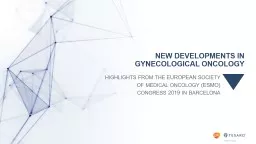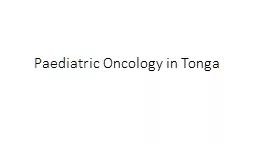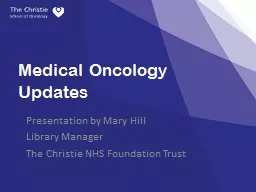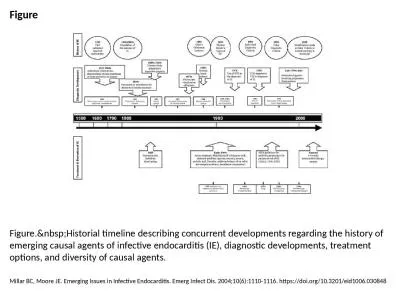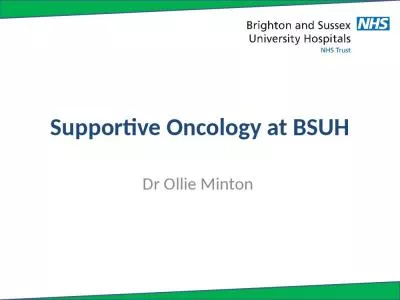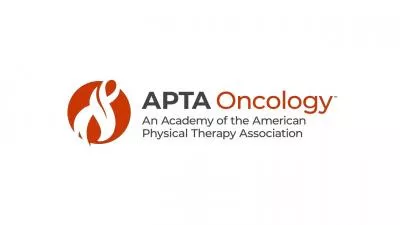PPT-NEw developments IN gynecological Oncology
Author : cheryl-pisano | Published Date : 2020-04-03
highlights from the EUROPEAN society of medical oncology ESMO congress 2019 in B arcelona Legal Disclaimer This slidekit is intended for healthcare professionals
Presentation Embed Code
Download Presentation
Download Presentation The PPT/PDF document " NEw developments IN gynecological Onco..." is the property of its rightful owner. Permission is granted to download and print the materials on this website for personal, non-commercial use only, and to display it on your personal computer provided you do not modify the materials and that you retain all copyright notices contained in the materials. By downloading content from our website, you accept the terms of this agreement.
NEw developments IN gynecological Oncology: Transcript
Download Rules Of Document
" NEw developments IN gynecological Oncology"The content belongs to its owner. You may download and print it for personal use, without modification, and keep all copyright notices. By downloading, you agree to these terms.
Related Documents

